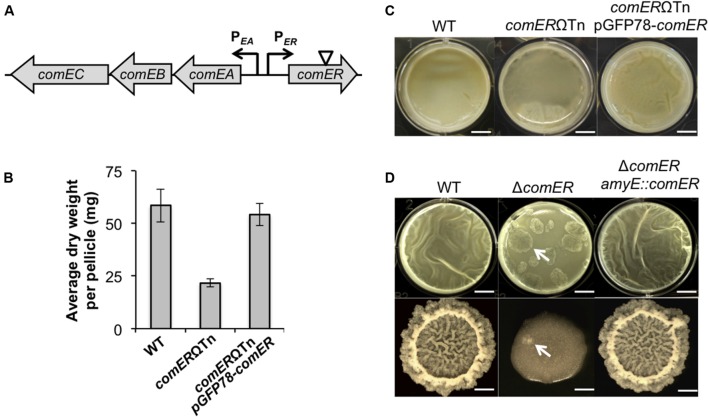FIGURE 2.
comER is important for biofilm formation in both B. subtilis and B. cereus.(A) A schematic drawing of the chromosomal region in B. subtilis containing divergently transcribed comER and the comEA-EB-EC operon (indicated by arrows). comEA and comEC encode structural proteins involved in DNA uptake during genetic competence (Hahn et al., 1993). The role of comEB is unclear and the gene is dispensable for genetic competence (Hahn et al., 1993). The position of the mini-Tn10 transposon insertion in the comER gene on the chromosome of B. cereus AR156 is indicated by the triangle. (B) Pellicle biofilm formation by the wild type (WT) (AR156) and the comER mutant (B168), and the comER complementation strain (YY298) of B. cereus. Scale bars, 4 mm. (C) Quantitative analysis of the biomass of pellicle biofilms from the WT (AR156), the comER transposon insertion mutant (B168), and the comER complementation strain (YY298) of B. cereus. Values in y-axis represent average dry weight (mg) per pellicle. Assays were done in triplicate. (D) Pellicle and colony biofilm formation by the WT (3610), the comER mutant (B165), and the comER complementation strain (YL46) in B. subtilis. Scale bars in the upper panels (pellicles) represent 4 mm in length and those in the lower panels (colonies) represent 3 mm in length. Arrows point to putative suppressors of B. subtilis ΔcomER emerged during both pellicle and colony biofilm development.

